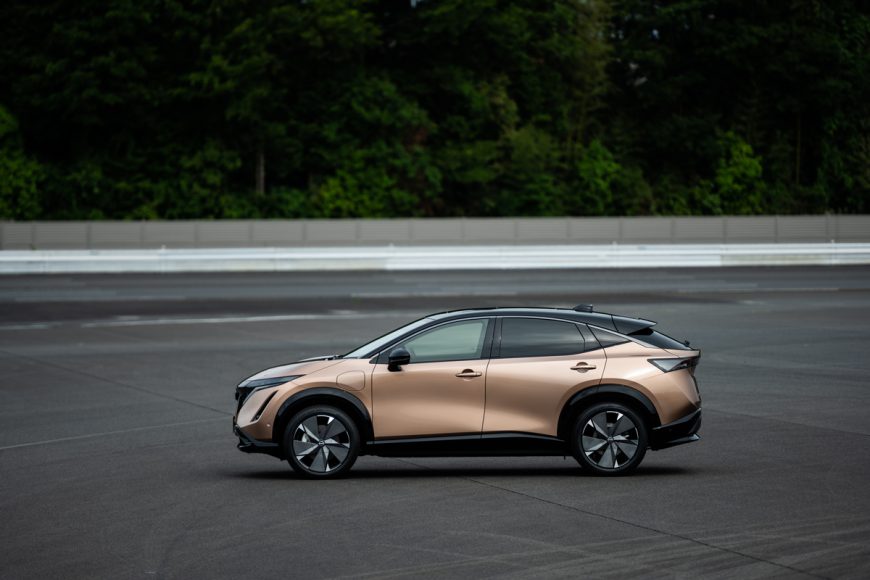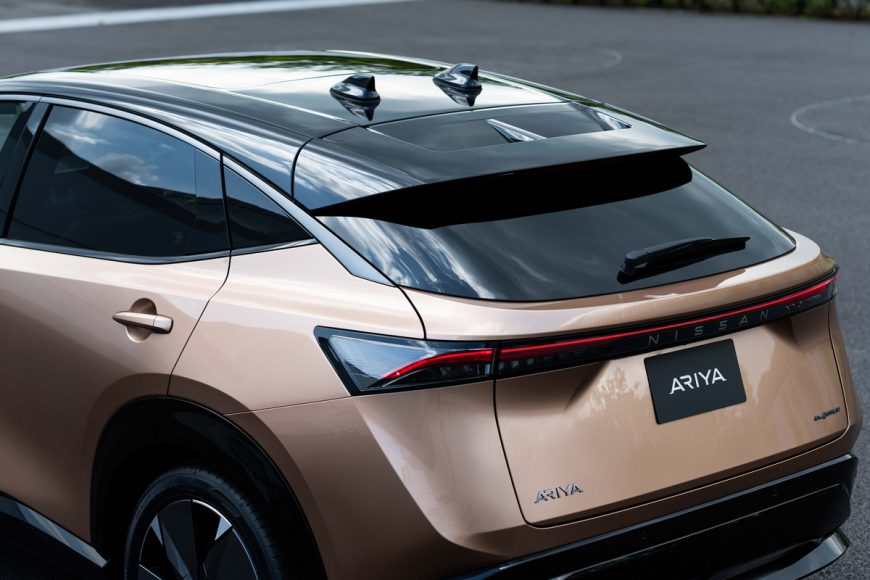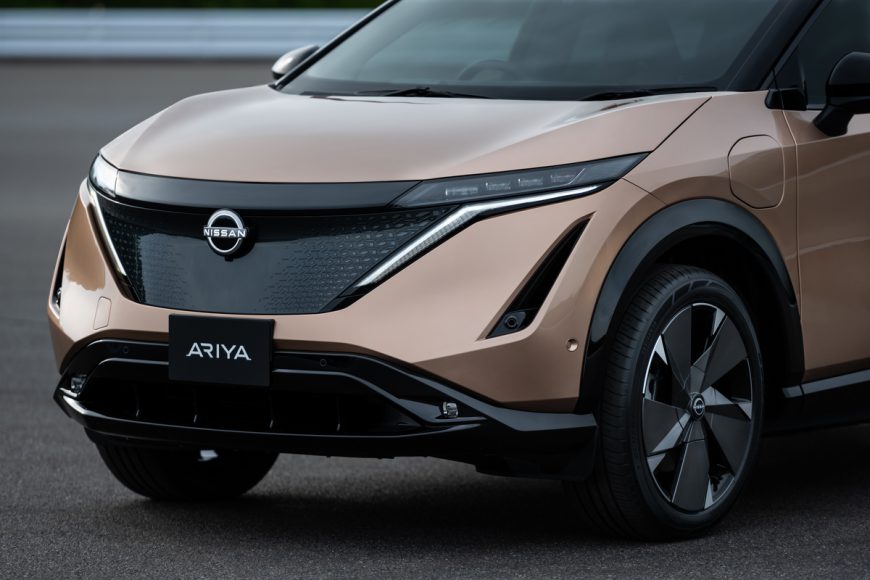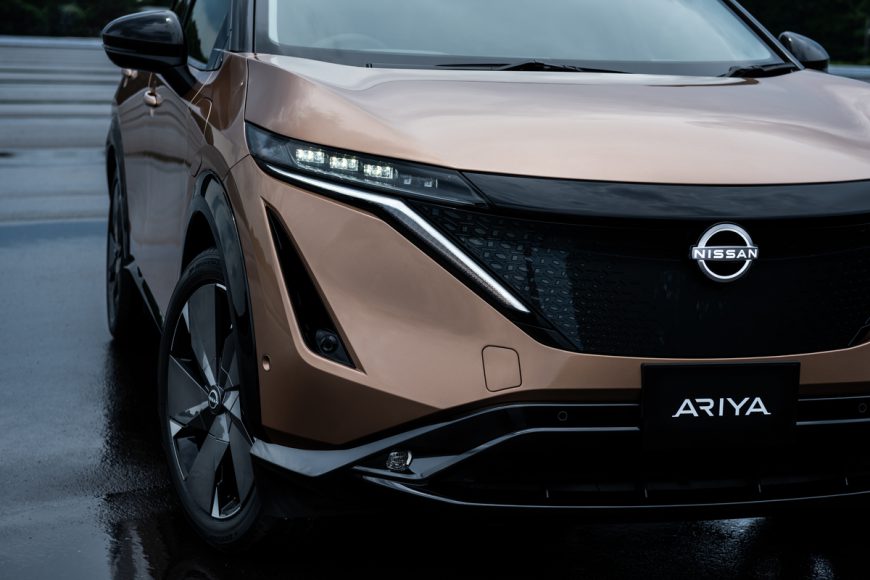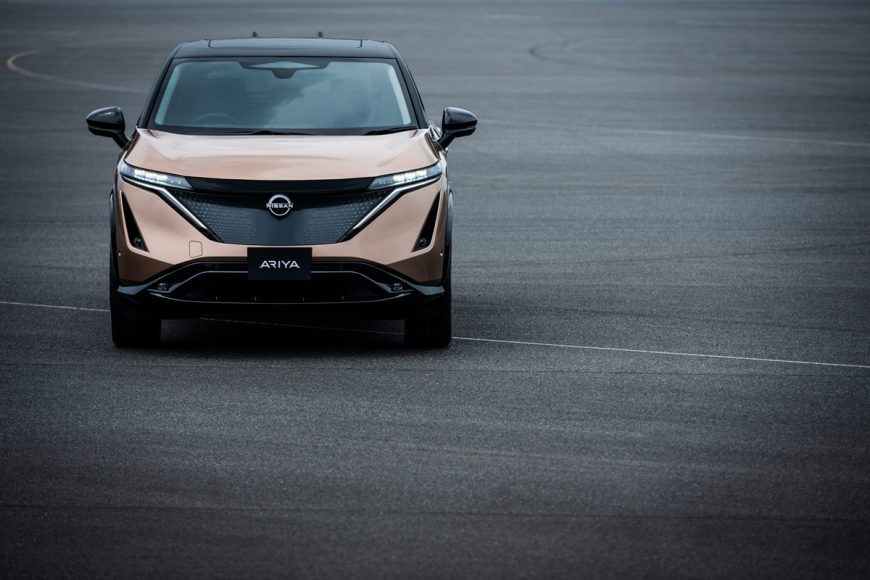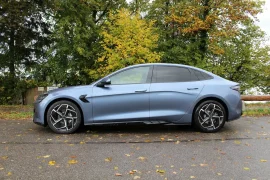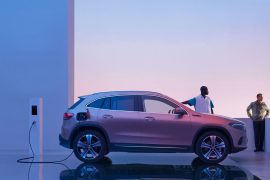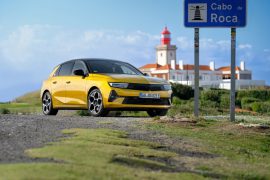Nissan has presented its new electric flagship. The futuristically styled electric car has only one flaw: it will not arrive in Europe for over a year.
Nissan is one of the pioneers of electric mobility. The first electric car, the Leaf, was launched in 2010. As a reminder: Tesla was still building a Lotus Roadster converted into an electric car, which was powered by laptop batteries. And while only about 2,500 Tesla Roadsters were built by hand, Nissan has now produced more than half a million Leafs in two model generations. Last year, the compact five-door car was still the best-selling electric vehicle in Europe.
In the meantime, the sales figures have come under mighty pressure: Other manufacturers have also entered the business and have outstripped the pioneer with more powerful models. In addition, there were problems with the car’s fast-charging capability, keyword „Rapidgate“.
Since the sales prices were reduced by 3600 euros for the model with the 40 kWh battery and from 4800 euros for the 62 kWh variant, demand for the Nissan Leaf has picked up again, at least in Germany – according to product manager Michel Janssen, sales figures have “quintupled” to around 500 cars a month since then. But in the registration statistics, the pioneer trails Tesla and Renault, as well as Volkswagen and Hyundai, by a wide margin.
Nissan and Renault share the platform
This could change in March 2022 at the earliest, when Nissan will bring the Ariya to Europe, a chic all-electric coupe crossover. The concept car was already presented at the Tokyo Motor Show next autumn. Now the first production model was presented in Germany – to Nissan dealers and a small circle of selected journalists. EDISON was also allowed to take a test seat and familiarise itself with the details of the car with which Nissan wants to shape the “next generation of electric mobility” and continue its own success story.
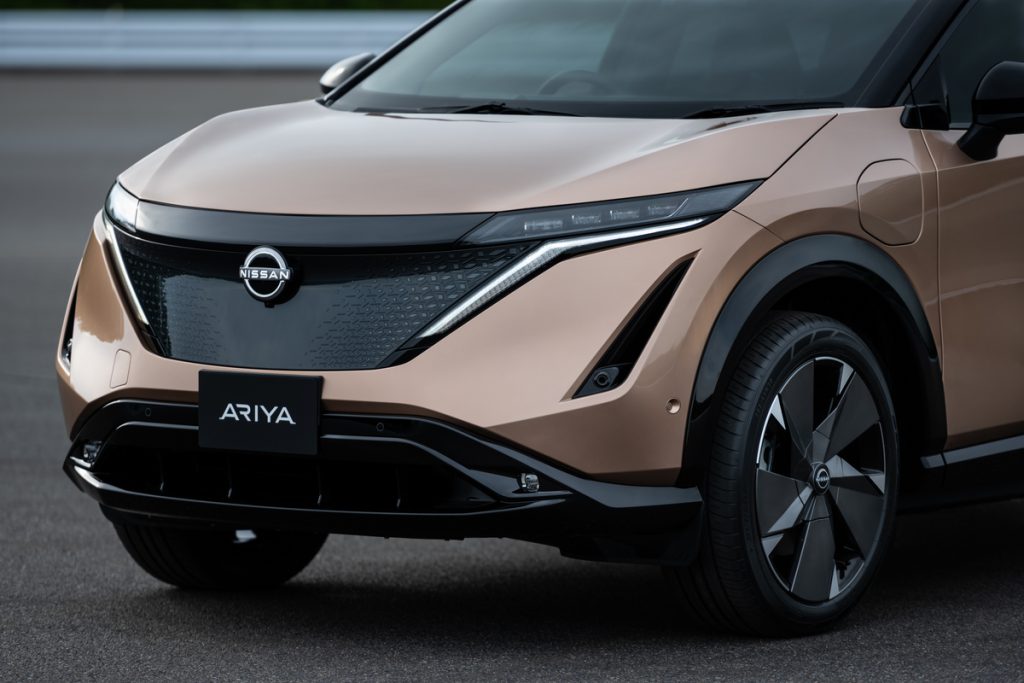
The electric “spaceship” comes with 19-inch wheels as standard. If you like, you can also get them one size bigger.
Together with its partner Renault, Nissan has developed a completely new architecture for this. The platform, called CMF-EV (Common Module Family and Electric Vehicles), enables front-, rear- and all-wheel drive and leaves space between the axles for water-cooled battery packs of (as of today) 63 and 87 kWh storage capacity. Renault will use the basis to launch an electric-powered compact vehicle next year – the recently shown Studie Renault Megane Evision concept car pointed the way.
Nissan, on the other hand, will assemble a sleek crossover coupe with a length of 4.60 metres and a wheelbase of 2.77 metres on the platform from autumn of next year in Japan, which will be offered in five variants with drive outputs between 160 kW (218 hp) and 290 kW (394 hp), optionally with front-wheel or all-wheel drive. Charging power of up to 22 kW with alternating current and up to 130 kW with direct current is promised. And customers in Europe should be particularly pleased: Unlike the Leaf, the electricity at the fast charging station flows into the battery via a CCS connection.
Fast charging with CSS and up to 130 kW
By comparison, the Leaf has a connection based on the Asian CHAdeMO connection, which is now a real handicap not only because of the limited charging power. The advantage of this system – the possibility of bidirectional charging – cannot be exploited in this country because the energy suppliers are opposed to feeding electricity back into the grid and, on top of that, there are no inexpensive wallboxes available. For a while, Nissan had therefore considered offering the Leaf in Europe with an optional CCS connection. But in the meantime the plan has been abandoned for cost reasons, revealed product manager Janssen: “It no longer makes sense.
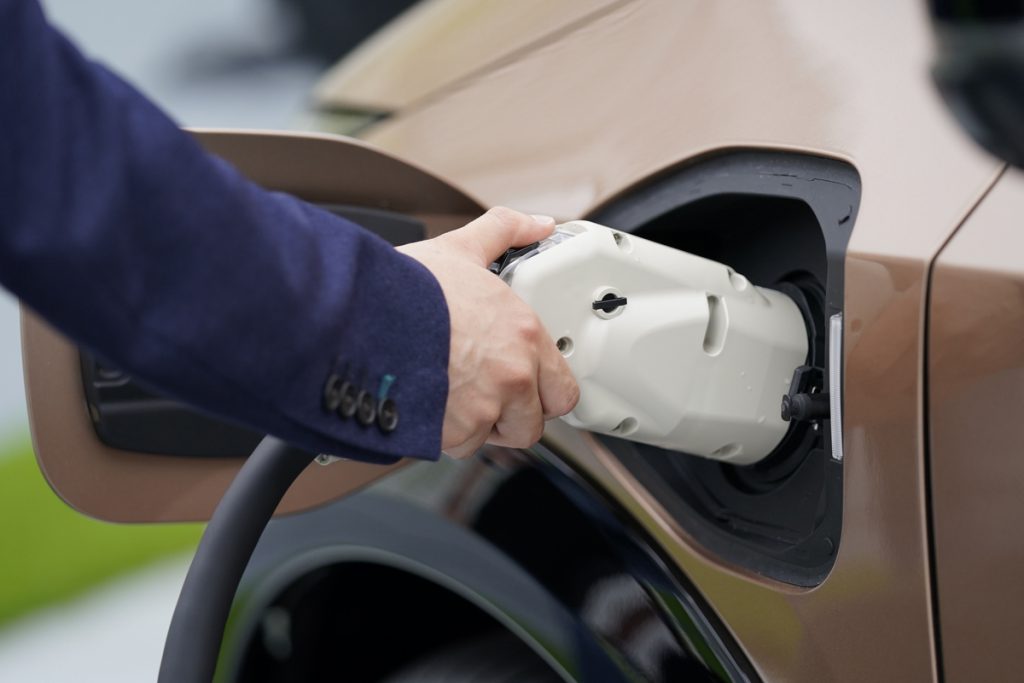
With the Ariya, on the other hand, the variant was planned from the beginning. However, the model is also supposed to be in a higher price range. The sales prices have not yet been fixed – of course, more than a year before the model’s launch. But according to Janssen, they are likely to be around 50,000 euros and – in view of the subsidies for electric mobility from the Bafa – up to 65,000 euros for the top version. Janssen: “We are taking our cue from the competition.” The MachE from Ford and the new BMW iX3. But above all the new ID.4 from Volkswagen, which currently costs just under 60,000 euros with a 150 kW engine and 77 kWh battery in the Max version of the First Edition. Janssen: “The Ariya won’t be much cheaper.”
This is because the futuristically styled electric car, which is always painted in two colours, is intended to become something like the flagship of the Nissan fleet, with a range of around 600 kilometres, a top speed of 200 km/h and a towing capacity of up to 1500 kg, fully suitable for everyday use and family use.
Ariya will not be a volume model
Up to five passengers are supposed to feel on board like in a “cafe lounge on a spaceship”, gliding silently through the landscape, with plenty of foot and knee space, with fine materials and all kinds of other nice details for the eye. There are no more classic control knobs and switches, but instead “capacitive” haptic switches: the function keys, which are integrated into the surface and glow softly while driving, respond to finger pressure. The centre console can be moved – as in the Renault Captur.
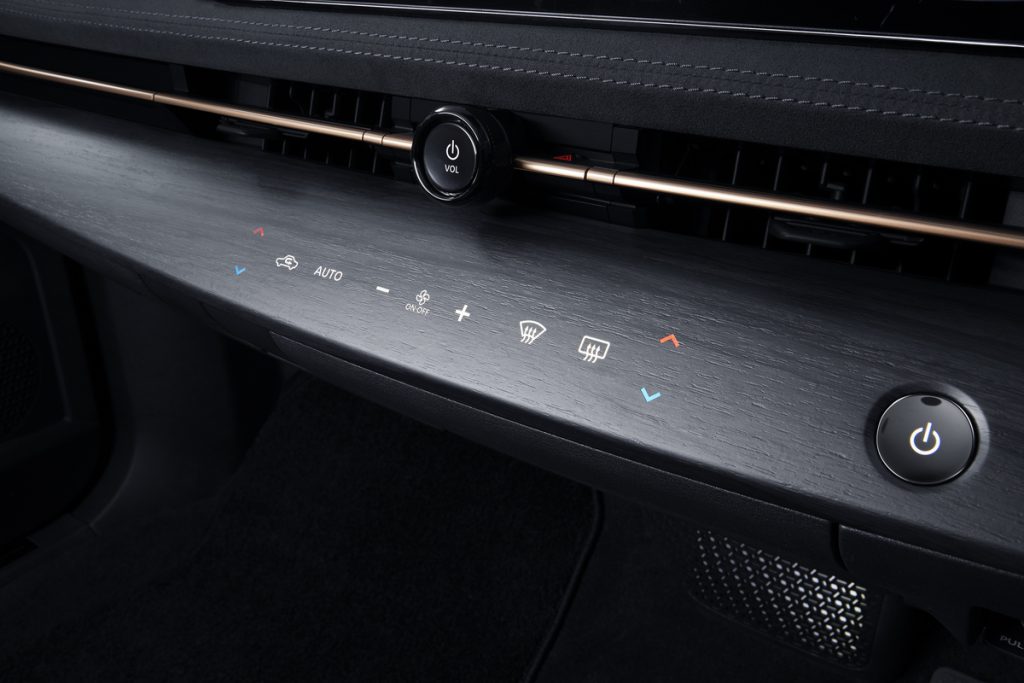
While driving, the buttons are backlit.
And if necessary, the passenger can swing a small table out of the dashboard to place his iPad on it – the mobile office is ready. It goes without saying that the vehicle will be fully networked and have an armada of assistance systems. All information can be called up via two 12.3-inch displays. The spaceship captain (m/f/d) will also receive further important information on the road via a standard head-up display. The Ariya is the first Nissan model to support firmware updates “over the air”, i.e. updates of the operating system through the air and by radio.
The new model was reportedly very well received by German Nissan dealers at the pre-launch presentation. The only discussion was reportedly about the long waiting time until the sales launch – and the later availability of the vehicle. Janssen had to dampen expectations here: in view of the vehicle’s positioning close to the luxury class, the number of units should remain manageable in order to keep the desirability and the return on investment high. The Dutchman did not want to reveal exact figures. But if one thinks of a high four-digit number, one is not entirely wrong.
Text: Franz W. Rother
Photos: Nissan
Original source of the article: https://edison.media

